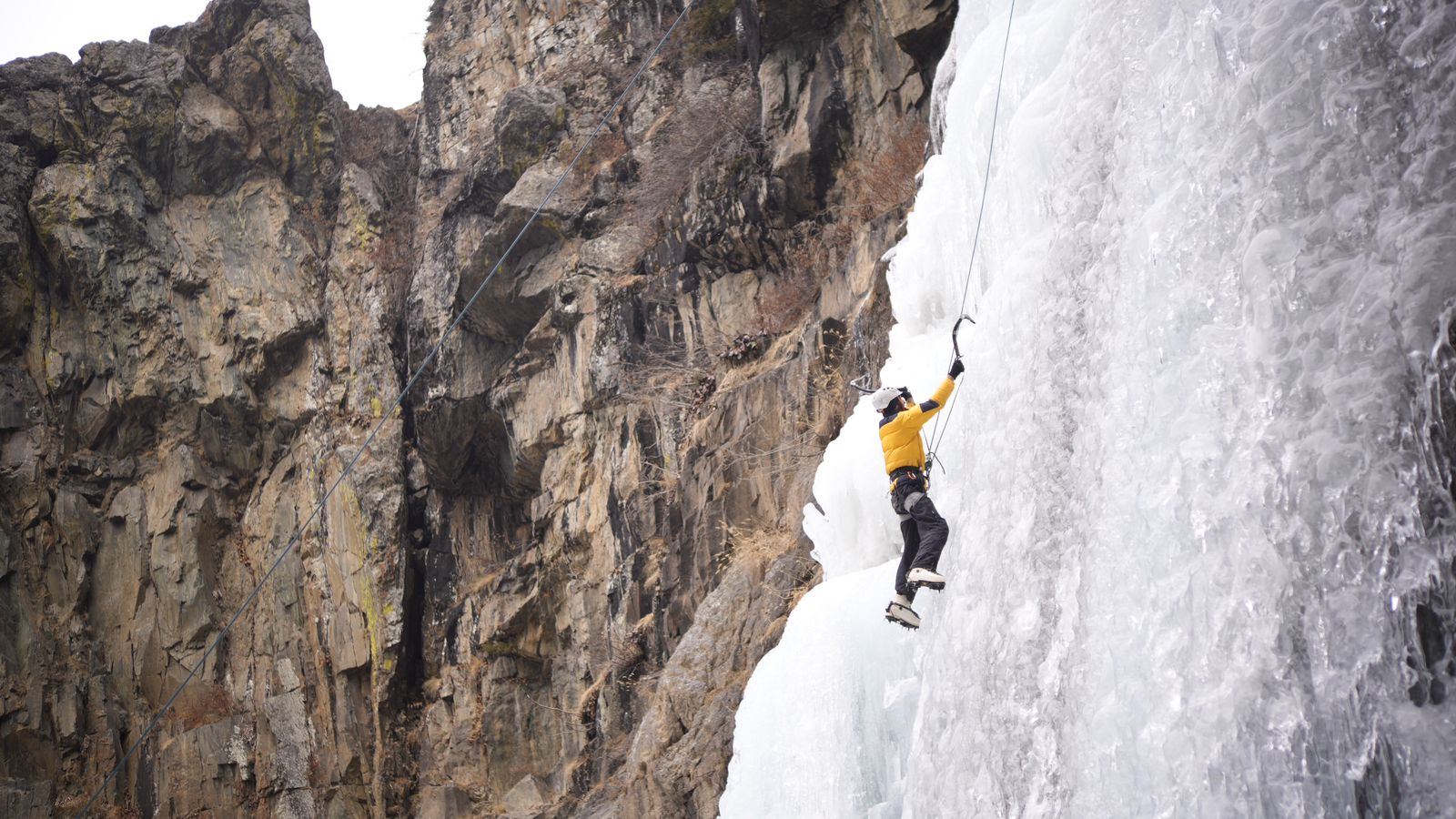by Babra Wani
SRINAGAR: Zeeshan Mushtaq secured the first position in the Natural Ice Climbing Wall Competition that the Jawahar Institute of Mountaineering and Winter Sports and the Pahalgam Development Authority jointly organised on January 28, 2024, in Pahalgam. The event aimed to promote adventure sports and showcase the winter activity potential of the region saw the participation of twenty-two participants from diverse backgrounds who showcased their skills and determination by navigating the challenging ice barriers of Pahalgam.

Jawahar Institute of Mountaineering and Winter Sports Ice climbing, a sport akin to rock climbing, involves scaling frozen waterfalls by gripping the jagged edges of massive rocks. Climbers employ crampons, picks, ropes, and other tools tailored for icy surfaces. The activity is deemed physically demanding, and performed in conditions that may expose participants to severe weather, avalanches, and crevasses, often requiring prolonged exposure to sub-freezing temperatures.
The sport encompasses two main types: Alpine ice climbing and water ice climbing. Alpine ice climbing occurs in elevated areas like glaciers, high mountains, and ice fields. On the other hand, water ice climbing is feasible only during winters when water freezes due to low temperatures, a practice particularly popular in Europe and the Canadian Rockies.
Ice Climbing Gains Traction in Kashmir
Alpine ice climbing has found a foothold in Kashmir, offering enthusiasts opportunities at various locations such as glaciers and couloirs. Water ice, primarily formed at frozen waterfalls, is dependent on factors beyond temperature, including the slope’s aspect, according to experts.
Despite conducive conditions, ice climbing has struggled to gain widespread attention in Kashmir. In 2016, the region saw its inaugural ice-climbing event, a collaboration between Jammu and Kashmir Tourism and Jammu and Kashmir Mountaineering and Hiking Club (JKMHC), led by experienced trekker and mountaineer Junaid Beigh.
The 2016 event featured 20 climbers, predominantly from Srinagar, scaling a 15-meter natural ice wall. However, the sport faced setbacks, ceasing in 2018 due to evident equipment shortages.
In 2021, Zeeshan Mushtaq, a local climber and mountaineer, sought to revive the sport. Facing challenges obtaining gear, Zeeshan and two friends ventured to Tramkazan nar, 45 minutes from Frislun village, the site of the 2016 event. Despite initial setbacks, Zeeshan’s determination bore fruit on January 21, 2024, when they successfully ascended the ice at Tramkazan Nar.
Reflecting on the journey, Zeeshan remarked, “I am proud that I was able to bring ice climbing back to Kashmir.” With plans to open the valley’s first ice climbing route, Zeeshan is optimistic about the sport’s future.
In contrast, Ladakh embraced ice climbing events in 2021 and has continued organising them annually.
Decades ago, ice climbing started gaining recognition as an outdoor adventure sport, marking its evolution into a notable activity in the region.
Ice Climbing Through Historical Lens
In the exploration of ice climbing’s origins, Jeff Lowe’s Ice World: Techniques and Experiences of Modern Ice Climbing sheds light on its historical roots. Lowe notes that the first documented evidence of ice climbing dates back to the sixteenth century when Alpine shepherds equipped themselves with spiked horseshoes and iron-tipped alpenstocks. These tools enabled them to navigate icy slopes while tending to their flocks in high Alpine valleys. Lowe remarks, “These shepherds challenged medieval superstitions about demons on summits and glaciers as dragons stealing from peasants’ cows at night.”
Initially, ice climbing was predominantly a summer alpine pursuit, with occasional winter ventures into high altitudes. Climbers then turned their attention to low-altitude waterfalls, frozen only in winter. However, in the high mountains, the interplay of spring and autumn conditions gave rise to a unique type of climb involving frozen drips, flows, runnels, and chimneys of water ice, transforming ice climbing into a year-round pursuit for enthusiasts. Iconic climbs of the 1970s, such as the Super Couloir on Mont Blanc du Tacul and Slip-stream in Canada, exemplify this category.
Lowe highlights the shift in the early to mid-1980s when individuals like Patrick Gabarrou, Jean-Marc Boivin, and Christophe Profit embraced off-season options. They pioneered paths on Mont Blanc, exemplified by climbs like Cascade de Notre Dame (V, WI5-7) and the Hypercouloir (V, WI5+7), featuring living water ice ascending hundreds of feet between granite pillars. Since the mid-1980s, the Alps have witnessed the proliferation of hundreds of similar climbs, marking a significant era in the sport’s development.















